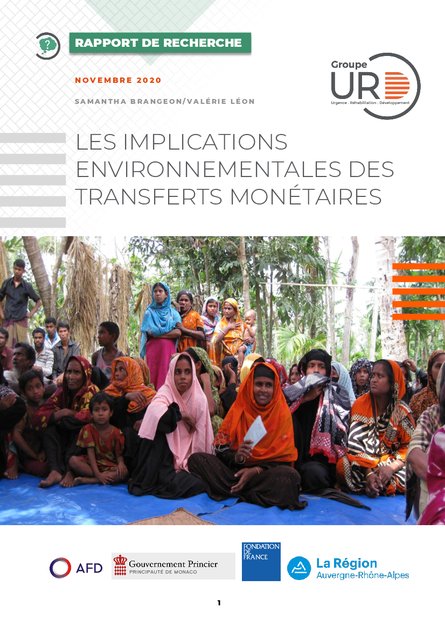
In recent years, the use of the "cash" modality in humanitarian programmes has grown exponentially. Some actors also put forward, among others things, environmental benefits. The main hypothesis being that if items are purchased locally, humanitarian actors will have a reduced carbon footprint. However, this equation may not be so simple.
Their increased use, in keeping with one of the commitments of the Grand Bargain, has brought numerous advantages, for example, in terms of reduced costs, the boosting of local markets and increased quality of aid. This has been documented by a variety of studies, particularly by the CaLP. Some organisations also claim that Cash and Voucher Assistance has environmental advantages, based on the idea that if purchasing takes place locally, the carbon footprint of transporting the goods that are distributed will necessarily be reduced for the humanitarian organisation. However, the relationship between cause and effect here is not as simple. Like all types of humanitarian operation, Cash and Voucher Assistance (CVA) can have environmental impacts, whether these are local (waste, soil pollution, etc.) or global (Co2 emissions).
These impacts are more difficult to trace for CVA than for ‘in-kind’ programmes, because, in the vast majority of cases, humanitarian actors do not control how the beneficiaries spend their cash. Despite this, negative impacts are still the responsibility of humanitarian organisations, who therefore need to anticipate and reduce them. What is more, CVA have environmental potential that is currently under-exploited in terms of more sustainable methods of consumption, reducing environmentally damaging survival strategies (e.g. vouchers to buy improved cooking stoves), etc. Other areas that organisations involved in CVA could explore include promoting local businesses with more sustainable products and helping suppliers/traders to adopt greener practices, such as less packaging.
Lastly, taking environmental issues into account in CVA (choice of method, selection of suppliers, evaluation of programmes, etc.) is an important step towards anticipating risks and maximising potential. Organisations involved in CVA can learn from the recent efforts to adopt greener policies and strategies in the humanitarian sector.
